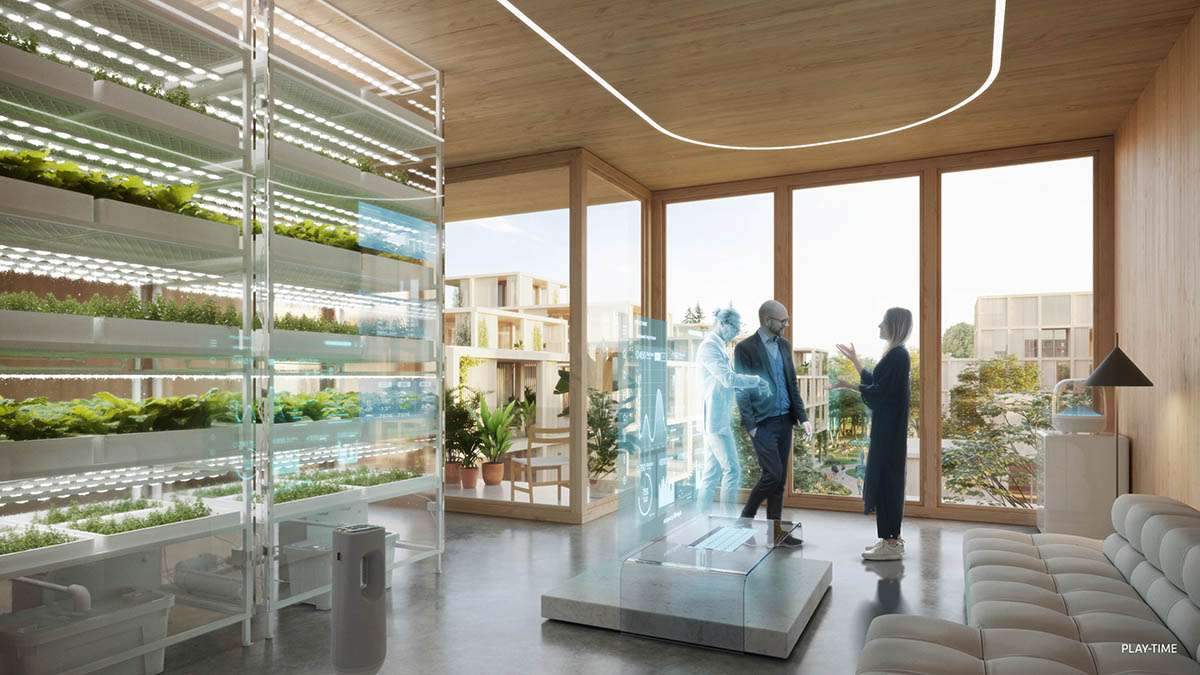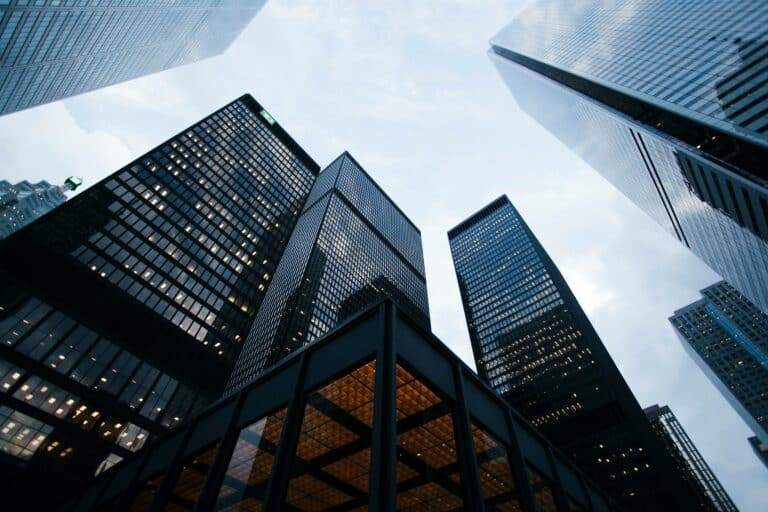Building Blocks of Imagination: Exploring the Intersection of LEGO and Modern Architecture
The Origins and Evolution of LEGO: A Reflection of Architectural Advancements
The Inception of LEGO and Its Architectural Parallels LEGO, synonymous with creativity and innovation, traces its origins back to 1932, when Ole Kirk, a Danish carpenter, ventured into the world of toy-making. Initially crafted from wood, LEGO underwent a significant transformation to plastic bricks, mirroring the evolution in building materials within the architecture industry. This shift from natural to synthetic materials not only revolutionized the toy industry but also paralleled similar transitions in architectural design and construction. The transition of LEGO from wood to plastic is emblematic of the broader shift in architectural practices, where traditional materials like wood and stone gave way to more versatile and durable materials like concrete and steel.
Influencing Architectural Perception and Design The evolution of LEGO reflects a deeper alignment with architectural principles – particularly modular design and interconnectivity. As LEGO evolved, it embraced the concept of standardized units that could be combined in infinite ways, much like the modular approach in modern architecture that emphasizes flexibility and scalability. The transition to plastic bricks in the 1950s allowed for greater precision and uniformity in LEGO pieces, which is akin to the precision required in modern architectural components. LEGO’s journey from simple building blocks to intricate models of iconic structures mirrors the architectural evolution from basic structures to complex, multifaceted buildings.
LEGO Architecture Series: Bridging the Gap Between Toy and Architectural Model
The Launch of LEGO Architecture Line In the 1960s, LEGO introduced its Architecture line, a significant leap that bridged the gap between child’s play and serious architectural modeling. This initiative began with the replication of city skylines, including those of Chicago, New York, and Paris, expanding to encompass iconic structures worldwide. The LEGO Architecture series not only introduced the wonders of architectural design to a broader audience but also served as a tool for aspiring architects and enthusiasts to explore and recreate famous buildings and skylines.
Collaboration with Architect Adam Reed Tucker The transformation of the LEGO Architecture series into a permanent range in 2008, thanks to a collaboration with LEGO fan and architect Adam Reed Tucker, marked a pivotal moment in LEGO’s architectural journey. This collaboration brought a new level of sophistication and realism to the LEGO models, aligning more closely with actual architectural principles and designs. It emphasized the importance of attention to detail, scale, and design accuracy, which are fundamental elements in the field of architecture. The series’ evolution from simple cityscapes to detailed models of iconic structures like Frank Lloyd Wright’s Fallingwater and the Burj Khalifa showcases how LEGO has become a medium for architectural expression and education.
Through these developments, LEGO transcends its identity as a mere toy, positioning itself as an influential tool in the architectural world. The LEGO Architecture series not only fosters an appreciation for architectural beauty and complexity but also underscores the importance of modular design and creative problem-solving in the field.
LEGO in Real-Life Architecture: Blurring the Line Between Play and Structural Design
Integrating LEGO in Actual Architectural Projects LEGO’s influence extends beyond toy boxes and into the realm of real-life architecture, challenging the traditional boundaries of building design. A prime example is the innovative staircase in a New York apartment, meticulously crafted from 20,000 LEGO pieces by I-Beam Design. This architectural marvel demonstrates the versatility of LEGO, showcasing how these blocks can be used to create functional, changeable, and visually striking elements within a space. The staircase’s design not only integrates seamlessly with the apartment’s overall aesthetic, filled with vibrant colors and artistic drawings, but also highlights LEGO’s potential as a practical building material that offers flexibility and interactivity in modern architecture.
LEGO as a Tool for Architectural Adaptation and Change The ability of LEGO to be easily rearranged and modified speaks to a growing trend in architecture: the demand for adaptable and dynamic spaces. Just as LEGO pieces can be disassembled and reconfigured to suit changing needs and preferences, contemporary architecture increasingly seeks to create spaces that are modular, customizable, and responsive to the evolving requirements of their users. This staircase is a testament to the innovative use of LEGO in real-life architectural contexts, embodying principles of modularity, creativity, and adaptability that are key to modern architectural design.

LEGO for Restoration and Protest: A Creative Fusion of Art, Architecture, and Activism
Reviving Historic Buildings with a Touch of LEGO LEGO’s versatility as a tool for architectural restoration and social commentary is brilliantly exemplified by ‘Dispatchwork,’ a project initiated by German artist Jan Vormann. In this unique undertaking, LEGO pieces are used to repair and restore abandoned historic buildings in 29 cities worldwide, from Tel Aviv to St. Petersburg. This creative approach to building restoration not only highlights the physical gaps in these structures but also draws attention to the broader issue of urban decay and the abandonment of historical heritage.
LEGO as a Medium for Architectural Expression and Social Awareness Vormann’s use of colorful LEGO bricks in ‘Dispatchwork’ serves as a powerful symbol of protest against the neglect of historic buildings. By integrating LEGO into the fabric of these structures, the project brings a playful yet poignant element to the urban landscape, inviting passersby to reflect on the history and preservation of their city’s architecture. This approach transcends traditional methods of restoration, using LEGO as a medium to blend art, architecture, and activism, thereby encouraging public engagement and awareness about the importance of preserving architectural heritage.
Through these two innovative uses of LEGO in real-life architecture and restoration, we see the transformation of a simple toy into a tool for architectural innovation, social commentary, and urban renewal. The adaptability and visual appeal of LEGO make it an ideal medium for exploring new possibilities in building design, restoration, and community engagement.
The LEGO House: A Physical Manifestation of LEGO Principles in Architecture
LEGO House as an Architectural Landmark The LEGO House in Denmark embodies the physical manifestation of LEGO’s principles in a large-scale architectural format. Designed as both a museum and an entertainment space, the LEGO House mirrors the configuration and versatility of LEGO bricks. This architectural feat exemplifies the potential of LEGO as more than a toy, but as a source of architectural inspiration.
Interactive and Creative Spaces Within Inside the LEGO House, visitors are greeted with various installations and structures made entirely from LEGO pieces, including a waterfall and large sculptures. This not only showcases the creativity and versatility of LEGO as a building material but also reflects the playful, imaginative spirit that LEGO instills in both architecture and its visitors.
LEGO and Interior Design: Merging Play with Practicality
LEGO and IKEA Collaboration: BYGGLEK Line The collaboration between LEGO and IKEA led to the creation of the BYGGLEK line, blending the concept of play with practical interior design. These modular boxes use LEGO’s interlocking system, showcasing how LEGO’s principles can be applied to everyday storage solutions.
Encouraging Creativity in Functional Design This collaboration highlights how the principles of LEGO – creativity, modularity, and interconnectivity – can be integrated into interior design. Andreas Fredriksson, a designer for IKEA Sweden, remarked on the BYGGLEK line: “Where adults often see mess, children see a stimulating creative environment.” This statement encapsulates the essence of integrating LEGO into interior design – fostering an environment where creativity is not only encouraged but also seamlessly integrated into functional design elements.







